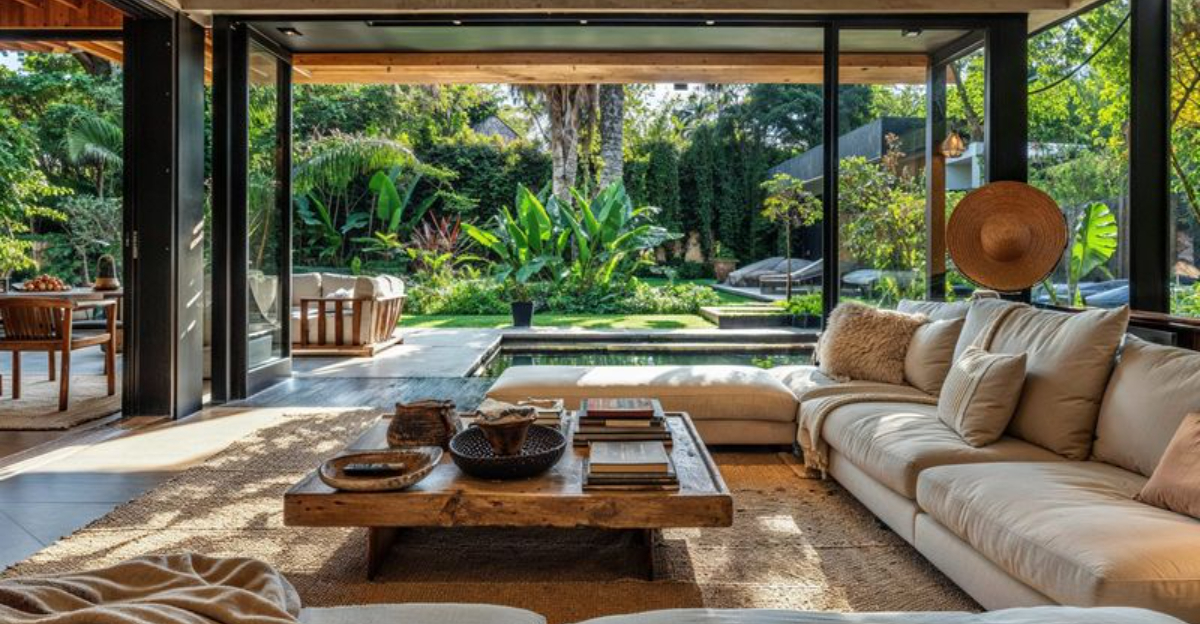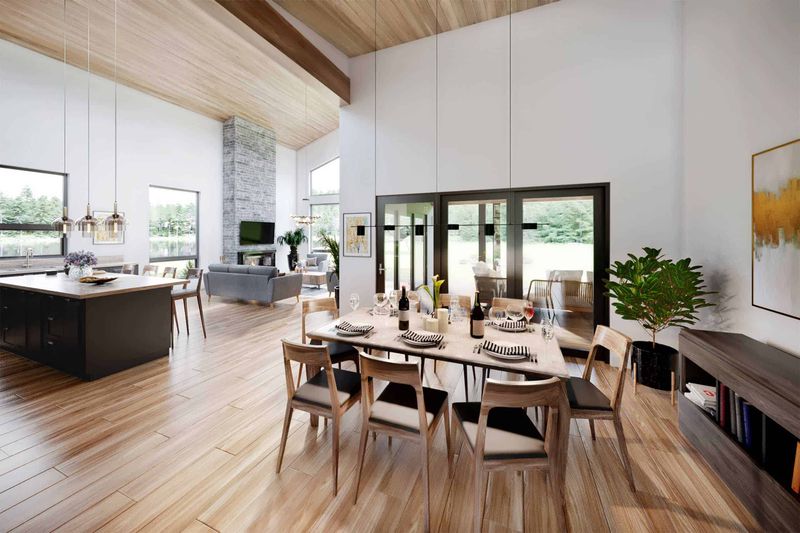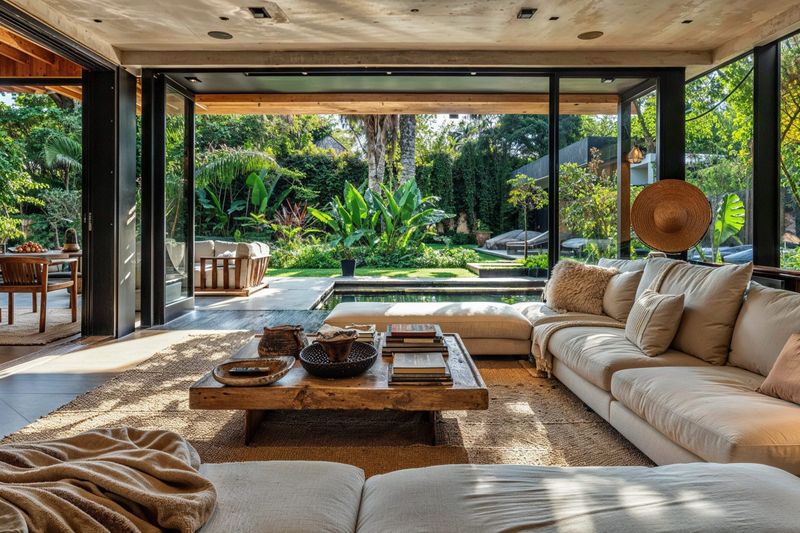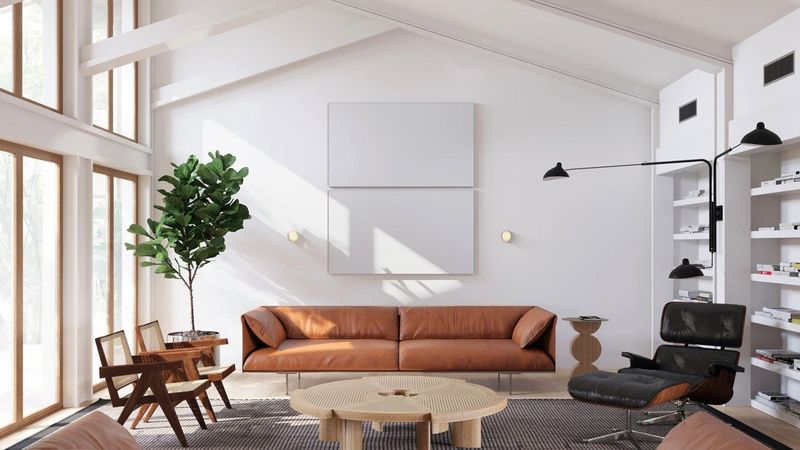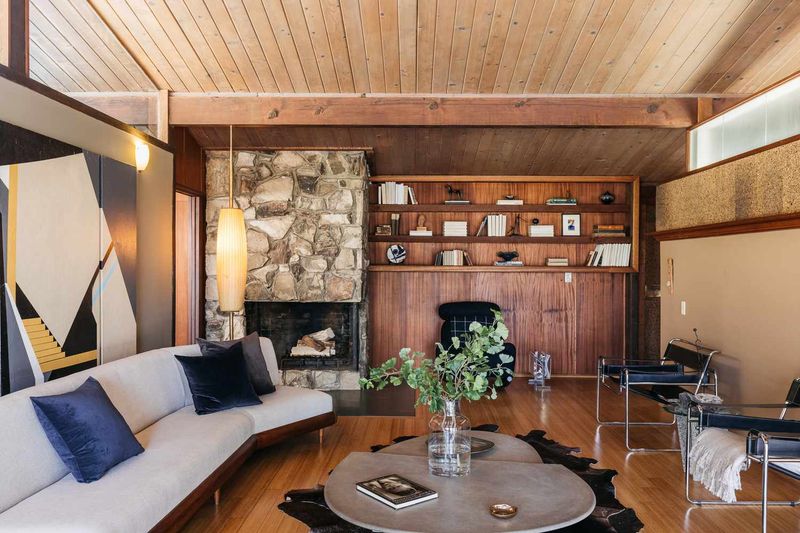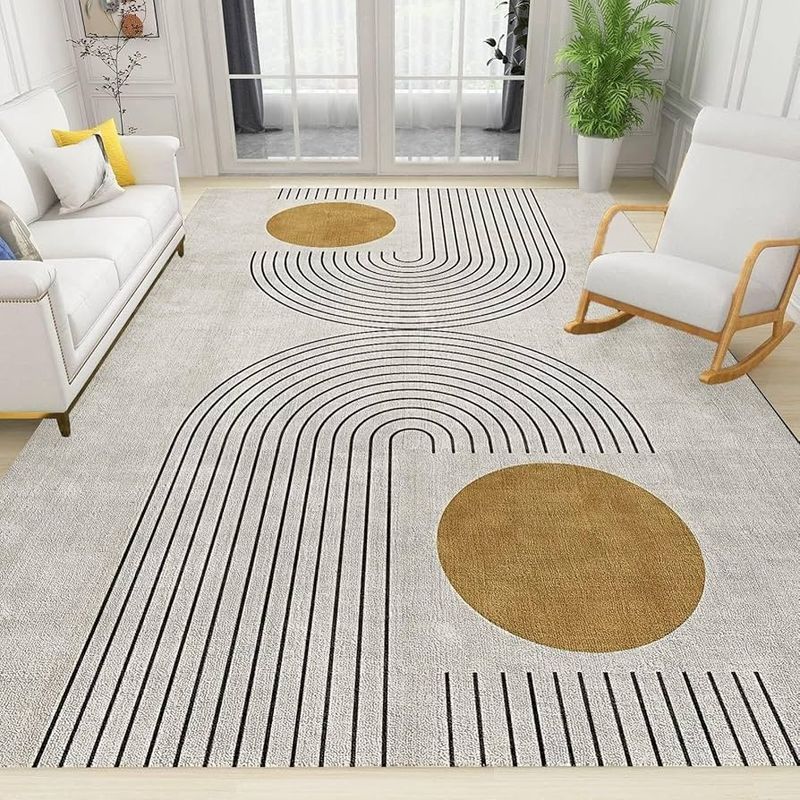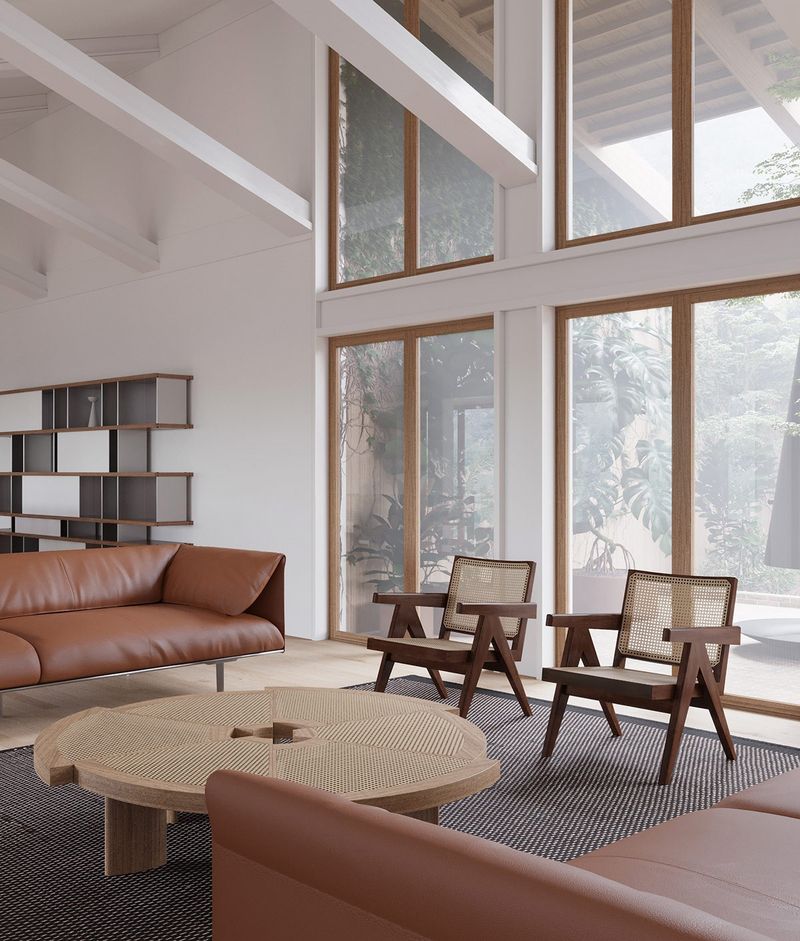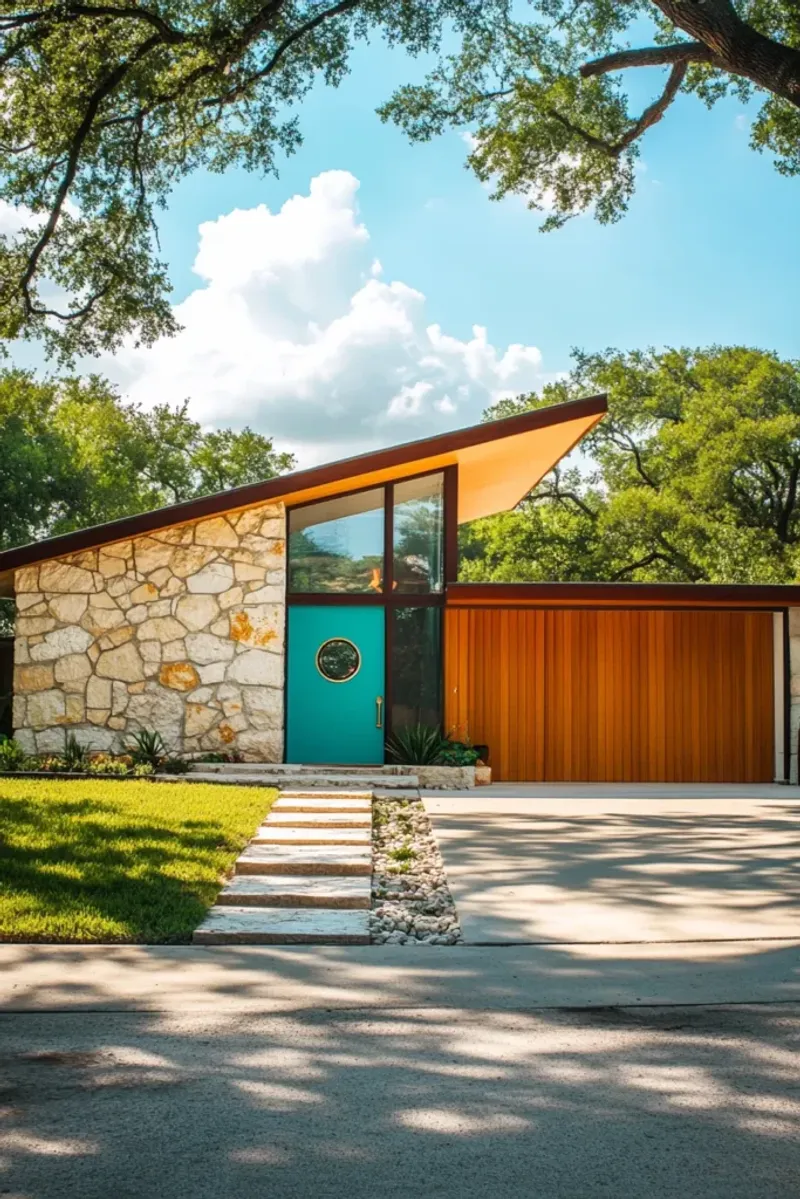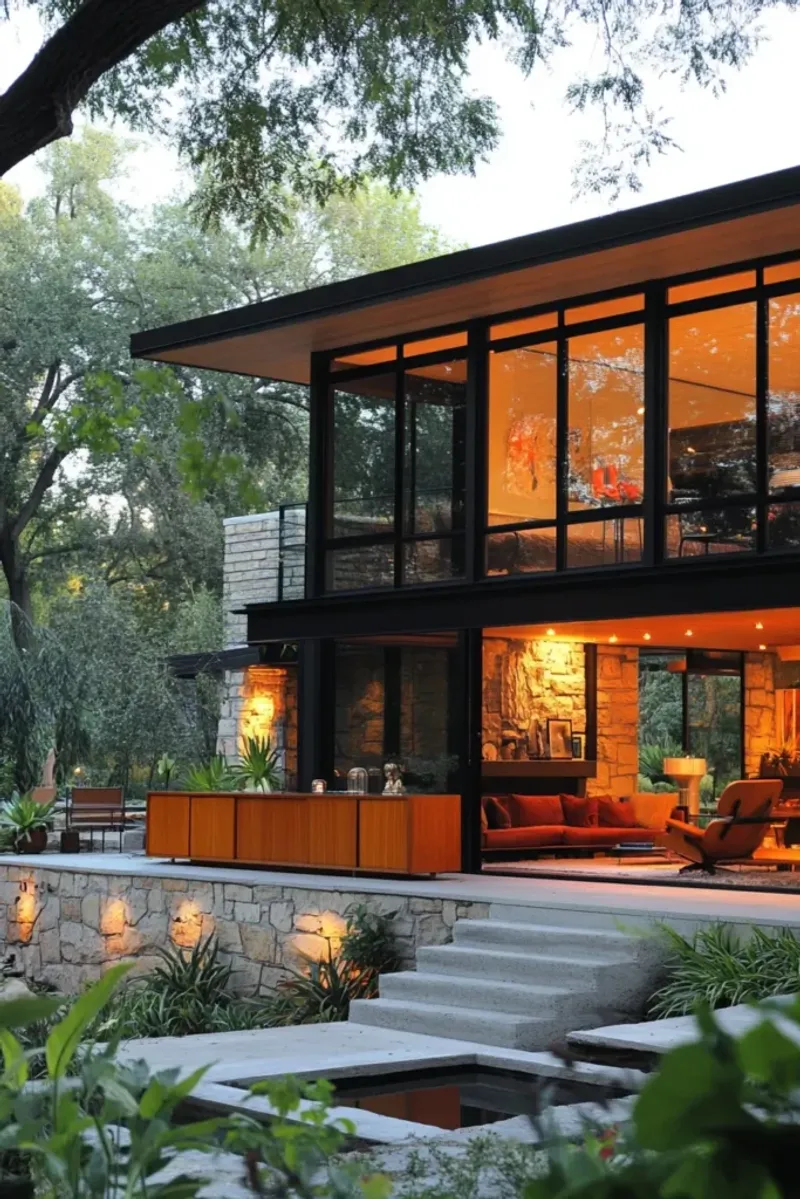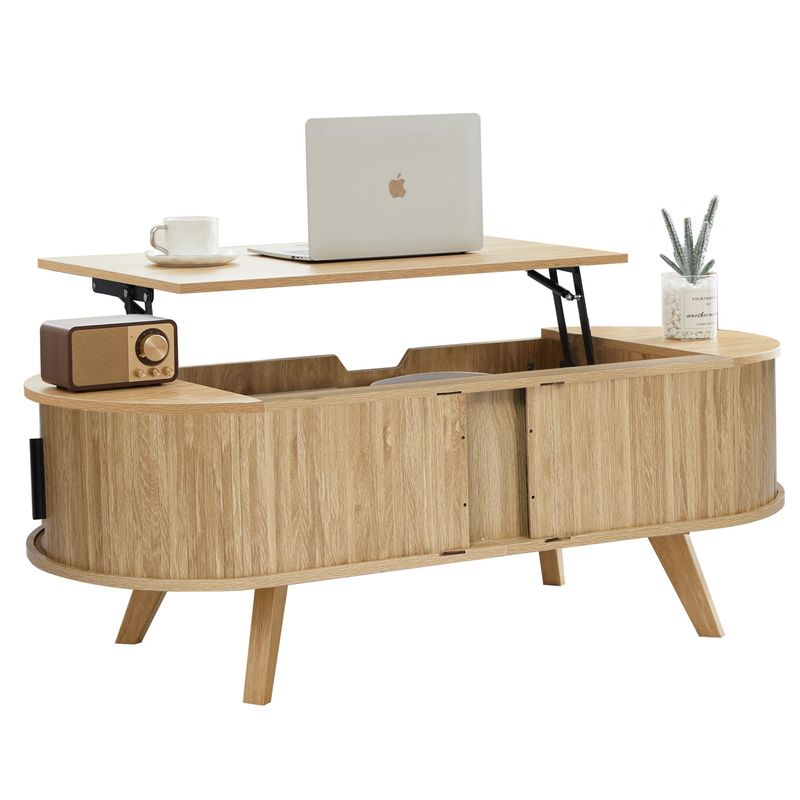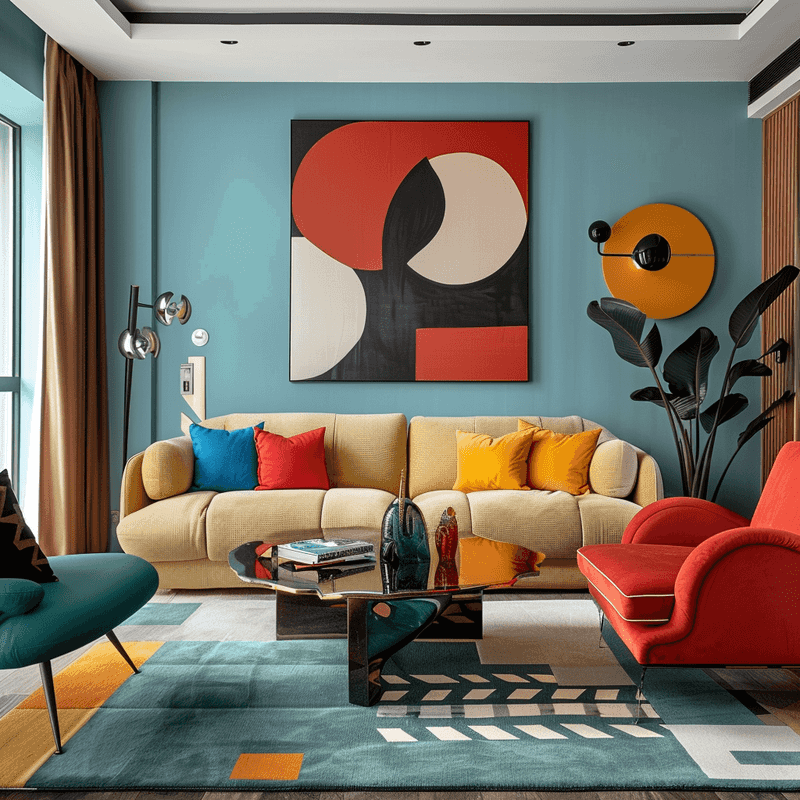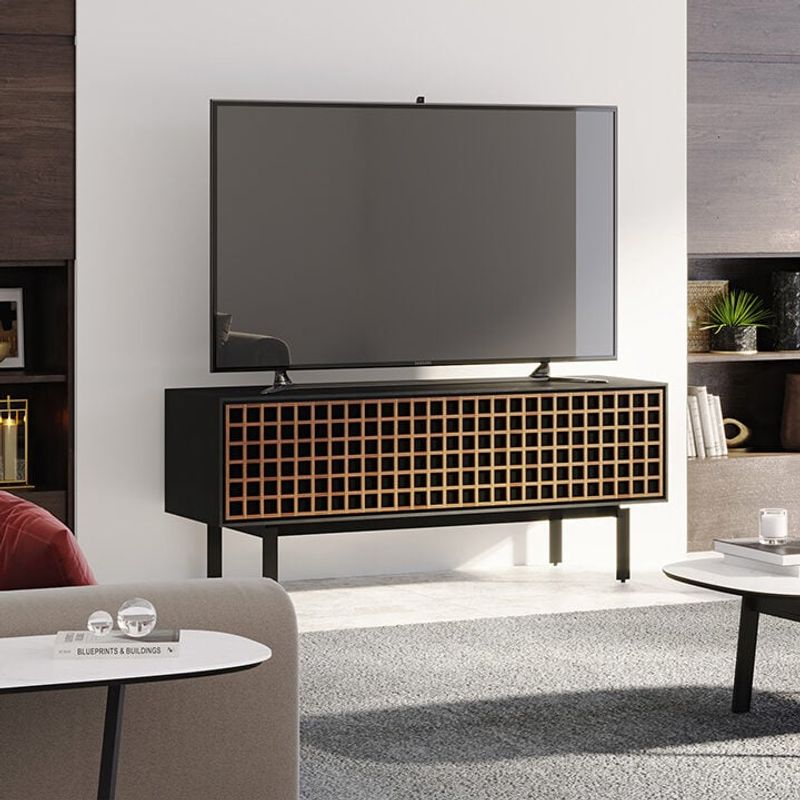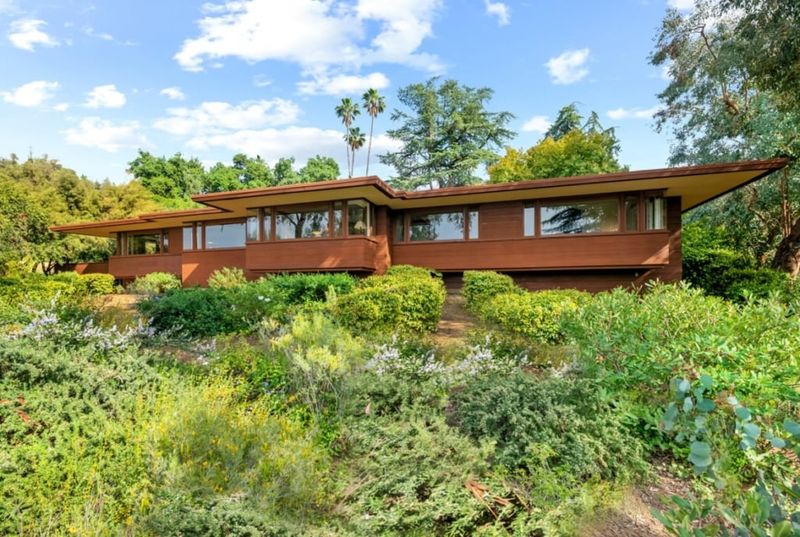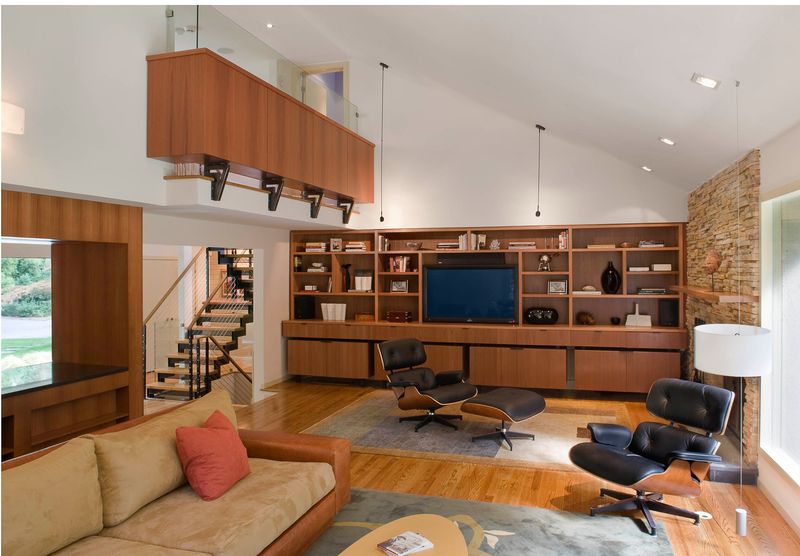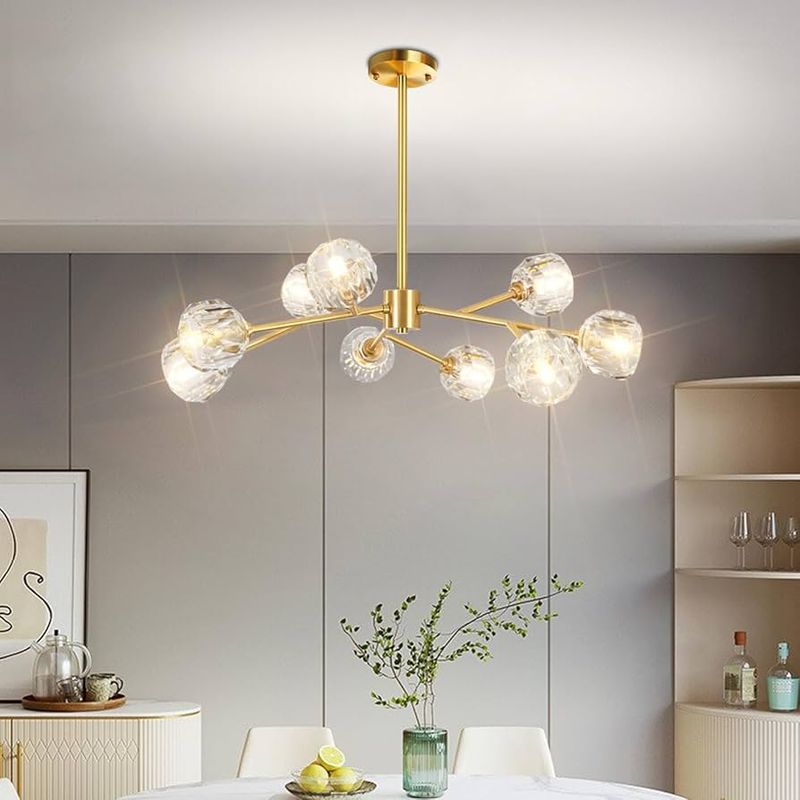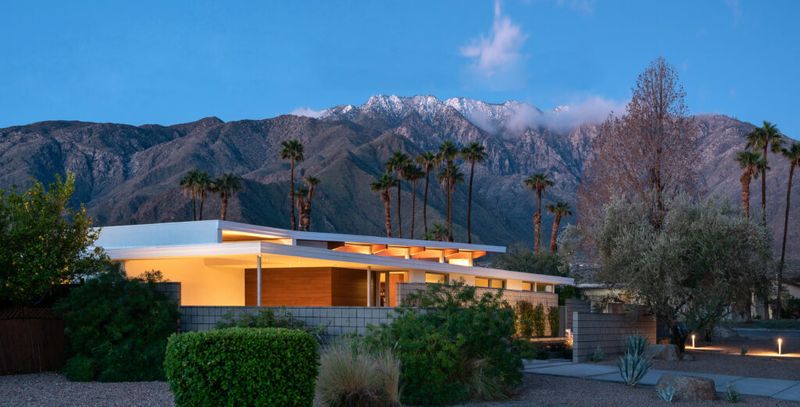Ever wondered why so many modern homes feel both fresh and somehow familiar? The secret lies in mid-century modern design, a style that peaked from the 1940s to 1970s but never truly faded away.
These architectural gems have silently shaped nearly everything we consider stylish in today’s homes.
From clean lines to bringing the outdoors in, mid-century modern principles continue to dominate contemporary design in ways you might not even realize.
1. Open Floor Plans That Create Flow
Remember those old houses with tiny, boxed-off rooms? Mid-century modern architects tossed those floor plans right out their enormous windows! They pioneered the concept of open, flowing spaces where living, dining, and kitchen areas blend seamlessly together.
Nowadays, you’d be hard-pressed to find new construction that doesn’t embrace this approach. The concept has become so fundamental that we barely notice its revolutionary origins. Modern families gather in great rooms rather than formal parlors because mid-century designers decided walls were overrated.
2. Bringing Nature Indoors
Who doesn’t love a room filled with houseplants these days? This wasn’t always the norm! Mid-century designers were revolutionary in their approach to melding indoor and outdoor spaces, making nature an essential design element rather than an afterthought.
Large windows framing landscape views, interior courtyards, and indoor planters weren’t just decorative choices—they reflected a philosophical shift. The designers believed human wellbeing improved when connected to natural elements.
3. Functional Simplicity
Gone are the days when furniture needed ornate carvings and fussy details to be considered beautiful. Mid-century designers championed the radical notion that everyday objects could be both practical and gorgeous through clean, unfussy forms.
Walking through any contemporary furniture store reveals this influence – sleek sofas with tapered legs, simple wooden tables with minimal ornamentation, and chairs designed for both comfort and visual appeal.
4. Materials That Stand The Test Of Time
Authentic mid-century homes showcase materials in their natural glory rather than covering them up. Exposed wooden beams proudly display their grain, while concrete walls remain unpainted to highlight their raw texture.
Fast forward to today, and this honesty in materials has become a cornerstone of contemporary design. The current obsession with reclaimed wood, polished concrete floors, and exposed brick walls stems directly from these mid-century principles.
Designers now routinely celebrate material authenticity, allowing natural patterns and imperfections to become key design features rather than flaws to be hidden.
5. Indoor-Outdoor Living Spaces
Imagine stepping from your living room directly onto a patio that feels like a natural extension of your home. This seamless indoor-outdoor flow wasn’t common before mid-century modern architecture made it a signature feature.
Sliding glass doors, continuous flooring materials, and covered outdoor rooms created spaces that blurred traditional boundaries. Today’s popular features – folding glass walls, outdoor kitchens, and living rooms with fireplaces that open to patios – all trace their DNA back to these mid-century innovations.
6. Clean Lines And Geometric Shapes
Have you spotted the geometric patterns adorning everything from throw pillows to shower curtains lately? Those crisp, clean lines come straight from mid-century modern’s playbook! Designers of this era embraced simple geometric forms in everything from furniture to architectural details.
Today’s interiors continue this love affair with strong shapes. Look around at contemporary light fixtures with their starburst patterns, area rugs featuring bold geometric designs, and furniture with distinctly angular silhouettes.
7. Minimal Yet Warm Interiors
Contrary to what some might think, minimalism doesn’t have to feel cold or sterile. Mid-century modern interiors pioneered a particular brand of minimalism that managed to feel both clean and inviting simultaneously.
Through careful material selection – warm woods, textured fabrics, and strategic color pops—these spaces achieved simplicity without sacrificing comfort. This balanced approach has heavily influenced today’s popular design aesthetic.
8. Flat Planes And Asymmetrical Profiles
Unlike traditional homes with their pitched roofs and symmetrical facades, mid-century modern houses introduced flat planes and deliberately asymmetrical profiles that were revolutionary at the time. These angular rooflines and offset entrances created visual interest through form rather than decoration.
Drive through any new housing development today, and you’ll spot these influences everywhere. Contemporary architects routinely incorporate flat or slightly angled rooflines, offset entries, and asymmetrical window arrangements.
9. Purposeful Window Placement
Forget windows as mere afterthoughts! Mid-century architects treated windows as crucial design elements, carefully considering their size, shape, and placement to frame specific views, create dramatic light effects, and establish connections with the outdoors.
This intentional approach to fenestration has thoroughly permeated contemporary architecture. Modern homes now routinely feature corner windows, clerestory lighting, and dramatic floor-to-ceiling glass—all mid-century innovations.
Architects today still follow these principles, designing window arrangements that serve both functional and aesthetic purposes while creating distinctive interior experiences.
10. Multi-Functional Furniture
Long before tiny houses made space efficiency trendy, mid-century designers were creating furniture that could serve multiple purposes. Modular seating that could be reconfigured, expandable dining tables, and storage pieces that doubled as room dividers were all common solutions.
Look around contemporary furniture stores and you’ll see this legacy everywhere. Today’s popular storage ottomans, convertible sofas, and nesting tables all stem from mid-century innovation.
As modern living spaces have become smaller, especially in urban areas, these multi-functional approaches have become increasingly relevant and widespread.
11. Playful Use Of Color
While many associate mid-century modern with neutral tones, the style actually embraced vibrant colors in strategic ways. Bold oranges, teals, mustard yellows, and olive greens appeared as accent walls, furniture pieces, or decorative elements against otherwise neutral backgrounds.
This approach to color has profoundly influenced contemporary design. Today’s interiors frequently feature neutral foundations punctuated by carefully selected color moments—a bright sofa, colorful kitchen cabinets, or an accent wall.
12. Seamless Technology Integration
Believe it or not, mid-century modern homes were early adopters of integrating technology seamlessly into living spaces. Built-in speakers, hidden television compartments, and lighting systems designed as part of the architecture rather than additions were all common features.
This forward-thinking approach to technology has become essential in contemporary design. Today’s smart homes with their invisible speakers, automated systems, and built-in charging stations are spiritual descendants of those mid-century innovations.
13. Emphasis On Horizontal Lines
Stretching low and long across their lots, mid-century modern homes emphasized horizontal lines that created a distinctive visual signature. This horizontal orientation connected buildings to their surroundings and produced a sense of calm stability.
Contemporary architecture continues this horizontal emphasis in countless ways. Modern homes feature extended roof overhangs, ribbon windows, long built-in benches, and horizontal siding patterns. Even interior elements like long, low credenzas and platform beds reflect this mid-century preference.
14. Built-In Furniture And Storage
Custom built-ins were signature elements in mid-century homes, with architects designing specific storage solutions that became part of the architecture itself. Window seats with hidden storage, room-dividing shelving units, and built-in desks maximized functionality while maintaining clean lines.
Walk through any high-end contemporary home and you’ll find this approach alive and well. Today’s architects routinely incorporate built-in benches, media walls, and custom storage systems that blend seamlessly with the architecture.
15. Thoughtful Lighting Design
Hanging from many contemporary ceilings, you’ll find lighting fixtures that could easily have been plucked from a 1950s home. Mid-century designers elevated lighting from mere utility to sculptural art, creating iconic fixtures that were as much about form as function.
Sputnik chandeliers, globe pendants, and mushroom lamps have all made major comebacks in today’s interiors. Beyond specific fixture styles, the mid-century approach to layered lighting – combining ambient, task, and accent lighting—has become standard practice in interior design.
16. Sustainability Before It Was Trendy
Long before LEED certification existed, mid-century architects were implementing what we now recognize as sustainable design principles. Passive solar orientation, cross-ventilation, and site-specific designs that minimized environmental impact were standard practices.
These approaches have become central to contemporary sustainable architecture. Today’s green building movement, with its emphasis on working with natural systems rather than against them, owes much to mid-century innovation.
Features like deep overhangs for seasonal sun control, operable windows for natural ventilation, and orientation-specific glazing have all become standard in environmentally conscious design.

